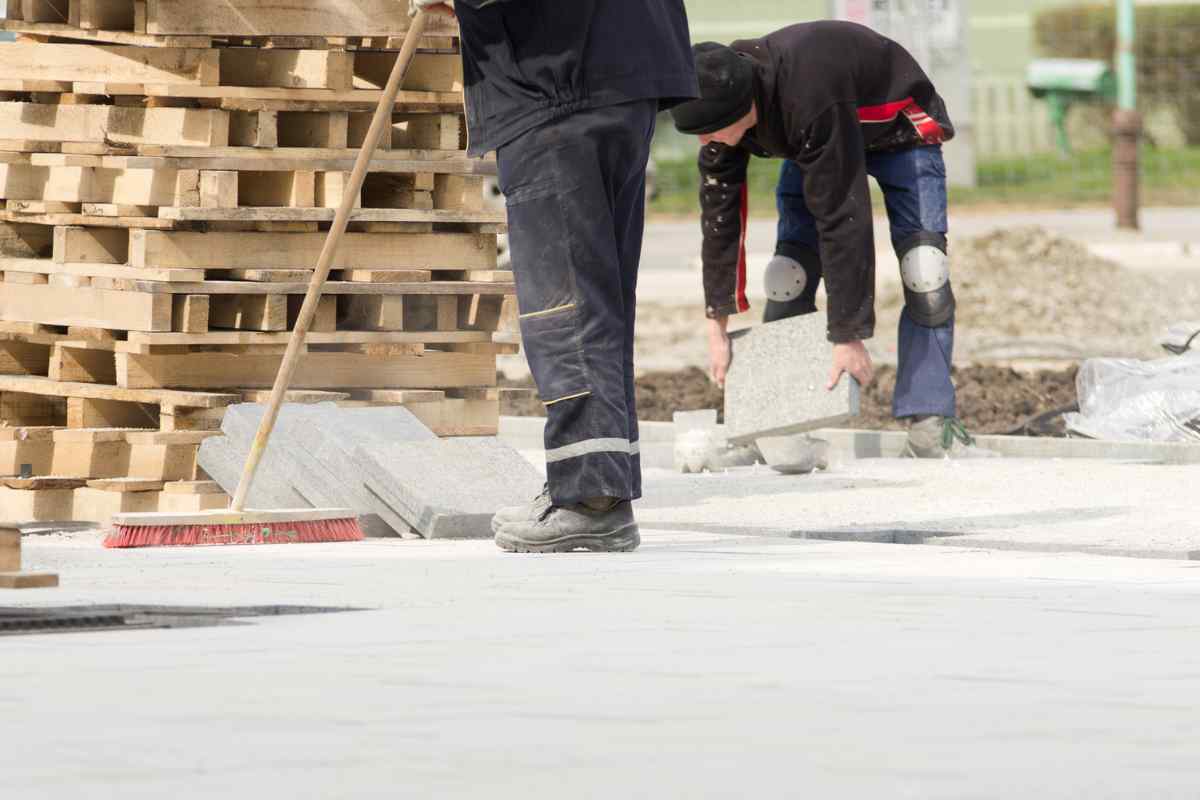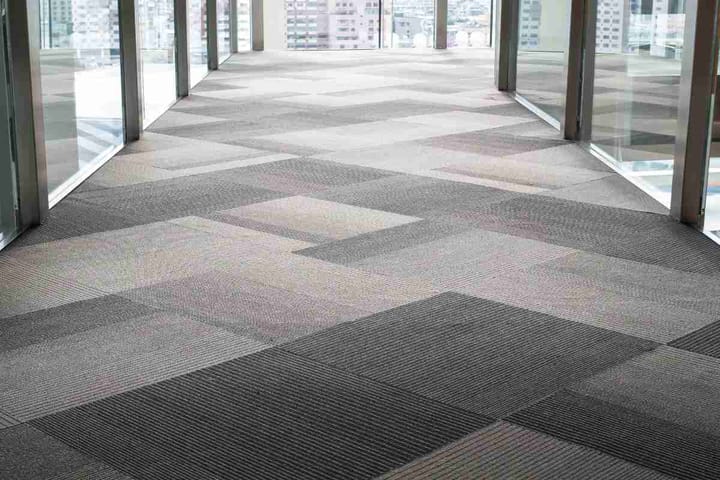From Debris to Clean: The Role of Construction Clean-Up Services in Home Project Completion
Construction clean-up services transition sites into clean spaces with rough clean-up, final touch-ups, HVAC, and window cleaning.

Key Takeaways:
- Construction clean-up services are essential for transitioning from a construction site to a clean, habitable space.
- The process includes rough clean-up, final touch-up, and specialized services like HVAC cleaning and window washing.
- Effective clean-up enhances safety, and HEPA filter aesthetics occur after the major construction or framing, plumbing, and electrical systems are installed and before the finishing touches are added, and includes responsible waste management and recycling.
After the last nail is hammered and the final tile laid, a construction or renovation project may seem complete, but the transition from construction site to livable space is crucial. Construction clean-up services play an essential role in this process, meticulously removing debris, dust, and construction waste to reveal the project's true potential.
That said, this guide will comprehensively examine the role of construction clean-up services in home project completion. It will detail the types of clean-ups, the specialized tools used, and the step-by-step processes involved.
Types Of Construction Clean-Up Services
Construction site clean-up services can be categorized into different types based on the scope and phase of the construction project:
1. Rough Clean-Up
This occurs after the major construction or framing, plumbing, and electrical systems are installed and before the finishing touches are added. It focuses on removing large debris and construction material scraps and making the site safe and accessible for subsequent trades to perform their work efficiently.
2. Final Clean-Up
Also known as touch-up cleaning, crews perform this type of service after completing all construction work and installing all fixtures. It involves a thorough cleaning of all surfaces, including floors, walls, windows, and fixtures, to remove dust and minor debris. This phase prepares the home for inspection, sale, or occupancy.
3. Specialized Clean-Up
Specific areas or aspects of construction clean-up require specialized services, such as HVAC system cleaning, exterior pressure washing, or hazardous material disposal. These services are essential for ensuring the safety and longevity of the building and its systems.
4. Post-Construction Window Cleaning
After construction, windows often require special attention to remove paint dots, stickers, and plaster splashes. Cleaning crews use special tools and cleaning solutions to clean the glass without scratching or damaging it.
5. Recycling And Waste Management
This involves the segregation and disposal of waste materials in an environmentally responsible way. Many clean-up services now emphasize sustainability, recycling suitable materials, and properly disposing of construction waste according to local regulations.
Tools And Equipment Used In Construction Clean-Up
In construction clean-up, having the right tools and equipment is essential for efficiency and thoroughness. Here’s a look at some of the common tools and equipment used in the process:
- Heavy-Duty Vacuum Cleaners: These are used to remove dust and smaller debris from floors, carpets, and other surfaces. HEPA filter vacuums are particularly important as they can trap fine particles without releasing them back into the air.
- Pressure Washers: Ideal for cleaning exterior surfaces such as driveways, sidewalks, and the exterior walls of buildings. Pressure washers effectively remove dirt, grime, and other residues that accumulate during construction.
- Scrubbing Machines and Buffers: For hard floors, these machines are used to clean and sometimes polish floor surfaces, removing scuff marks and plaster or paint splatters effectively.
- Brooms, Brushes, and Dustpans: Essential for manual sweeping and detailed cleaning of both indoor and outdoor areas. Brushes of various stiffness are used depending on the delicacy or robustness of the surface.
- Squeegees and Window Cleaning Tools: Cleaning crews use these to clean windows, mirrors, and other glass surfaces, helping to remove streaks and ensure a clear, streak-free finish.
- Trash Bags and Bins: For collecting and segregating waste and debris. Durable and heavy-duty bags are used to handle sharp and heavy materials safely. Additionally, a dumpster rental Raleigh offers an effective solution for managing more substantial waste that bags alone cannot easily handle.
- Personal Protective Equipment (PPE): Safety gear including gloves, dust masks, safety glasses, and hard hats protect workers from dust, chemical vapors, and potential injuries from construction debris.
- Ladders and Scaffolding: Provide access to high areas for thorough cleaning of walls, ceilings, and windows.
- Chemical Cleaners and Disinfectants: Used for cleaning stains, disinfecting surfaces, and in some cases, removing stubborn residues like adhesive or paint.
- Dehumidifiers and Air Movers: Sometimes used to speed up the drying process in damp areas or after floor washing.

Step-By-Step Guide To Post-Construction Cleaning
Post-construction cleaning is a meticulous process that transforms a new or renovated space from a dusty construction site into a clean and welcoming environment. Here’s a step-by-step guide to effectively managing this crucial phase:
Step 1: Planning And Preparation
Before the actual cleaning begins, it's crucial to assess the full scope of the job. A detailed walkthrough of the site helps identify specific areas that need attention and determine the volume of debris to be managed. During this phase, gather all necessary cleaning supplies, including brooms, vacuums, mops, cleaning agents, and personal protective equipment (PPE) like gloves, masks, and goggles. Ensuring the safety of the cleaning crew is paramount, so you should equip all personnel with the appropriate safety gear before work commences.
Step 2: Initial Cleaning
The initial cleaning stage focuses on removing larger pieces of debris and trash from the construction site. This involves collecting scraps of materials, nails, and other construction waste and disposing of them properly in designated bins or bags. After clearing the large debris, the next step is to remove finer materials like dust and dirt. This is typically done by sweeping the floors thoroughly and dusting all surfaces, including hard-to-reach areas such as upper shelves, ceiling corners, and light fixtures, to ensure a comprehensive clean-up.
Step 3: Deep Cleaning
Once you tackle the larger debris and dust, deep cleaning begins. This involves using heavy-duty vacuum cleaners to remove finer dust particles from all surfaces, including carpets, floors, and fabric upholstery. Hard surfaces such as tiles, countertops, and bathrooms require scrubbing with appropriate cleaning agents to remove any stubborn stains or construction residue. Additionally, window cleaning is crucial at this stage; it includes washing the glass inside and out, removing any paint splatters, and ensuring that the windows are streak-free.
Step 4: Detailed Cleaning
After the broader areas are clean, attention shifts to detailed cleaning, focusing on fixtures and appliances. This includes thoroughly cleaning and sanitizing all kitchen and bathroom fixtures—sinks, toilets, showers—and appliances like ovens and refrigerators. Floor treatment is also significant; depending on the type of flooring, this might involve mopping, waxing, buffing, or specialized carpet cleaning. The air vents should not be overlooked; dusting and cleaning these areas prevent the circulation of dust and help maintain clean air in the facility.
Step 5: Final Inspection And Touch-Up
A final inspection is crucial to ensure that no area has been overlooked. In this phase, conduct a meticulous walkthrough of the space, checking every nook and cranny for dust, debris, or stains that might have been missed during the earlier stages. Address any areas that require additional professional cleaning immediately. This step also includes neutralizing any lingering odors from paint or solvents and using deodorizers to ensure the space is fresh and inviting.
Step 6: Waste Disposal And Recycling
Proper waste management is the final physical step of post-construction cleaning services. It's important to segregate waste into recyclables and non-recyclables. Recyclable materials should be sent to appropriate recycling facilities, while non-recyclables need to be disposed of in accordance with local regulations, ensuring environmental compliance.
Step 7: Client Handover
Once you complete the post-construction cleaning process and the site is ready, arrange a final client walkthrough. This step lets the client verify the cleanliness and readiness of the space. Address any concerns or additional clean-up requests from the client promptly to ensure satisfaction. Additionally, providing documentation of the professional cleaning process, including details of the areas cleaned and materials used, offers transparency and can help in maintaining the standard or addressing future needs.
Benefits Of Professional Construction Clean-Up
Professional construction clean-up offers many benefits crucial for the seamless transition from construction site to completed project. Here’s a deeper look at these advantages:
1. Ensures Safety
One of the primary benefits of professional construction cleaning services is ensuring safety. Hazardous materials and debris, which pose risks of injury, litter construction sites. Professional cleaners, trained to handle and dispose of sharp objects, hazardous materials, and heavy debris safely, mitigate these risks effectively. This minimizes the risk of accidents and injuries for both the clean-up crew and the eventual occupants of the building.
2. Enhances Aesthetics And Functionality
After construction, a property may technically be ready for use, but dust and debris can obscure the beauty of the workmanship and compromise the functionality of the space. Professional clean-up services meticulously remove all construction remnants, revealing the construction work's quality and ensuring that every aspect of the building is presented in the best light. This not only enhances the aesthetics but also allows the new occupants to utilize and enjoy their new space immediately.
3. Saves Time And Reduces Stress
Construction projects can be stressful and time-consuming. By hiring professional clean-up services, property owners and managers can offload the substantial task of cleaning, which can be very labor-intensive and requires a meticulous approach. Professionals use efficient techniques and specialized equipment to speed up the post-construction cleaning process, significantly reducing the time it would take for non-professionals to achieve similar results. This allows builders and homeowners to focus on other essential aspects of wrapping up the project, such as inspections or move-ins.
4. Ensures Compliance With Regulations
Professional clean-up services are well-versed in the regulations surrounding waste disposal and environmental compliance. They ensure that all waste is disposed of in accordance with local laws, which can vary widely depending on the location. This is crucial for avoiding legal penalties and supporting sustainable practices by properly segregating and disposing of recyclable and non-recyclable materials.
5. Improves Air Quality
Post-construction dust can be a significant health hazard, especially fine particles that linger in the air. Professional cleaners thoroughly remove, not just displace, the dust. They operate HEPA filter vacuums and other advanced equipment to clean the air and surfaces, thus improving indoor air quality. This improvement benefits everyone who enters the space after the project's completion.
Provides Professional Finishing Touches
The attention to detail provided by professional cleaners can be the difference between a good and an excellent finish. They perform deep cleaning, including polishing, sanitizing, and deodorizing the space to ensure it is hygienically clean and welcoming. This level of cleanliness is only possible with professional skills and equipment.
Conclusion
The integration of professional construction clean-up services into any building or renovation project is invaluable. These services ensure a smooth transition from construction chaos to a clean, safe, and welcoming environment, ready for immediate occupancy.


Comments ()